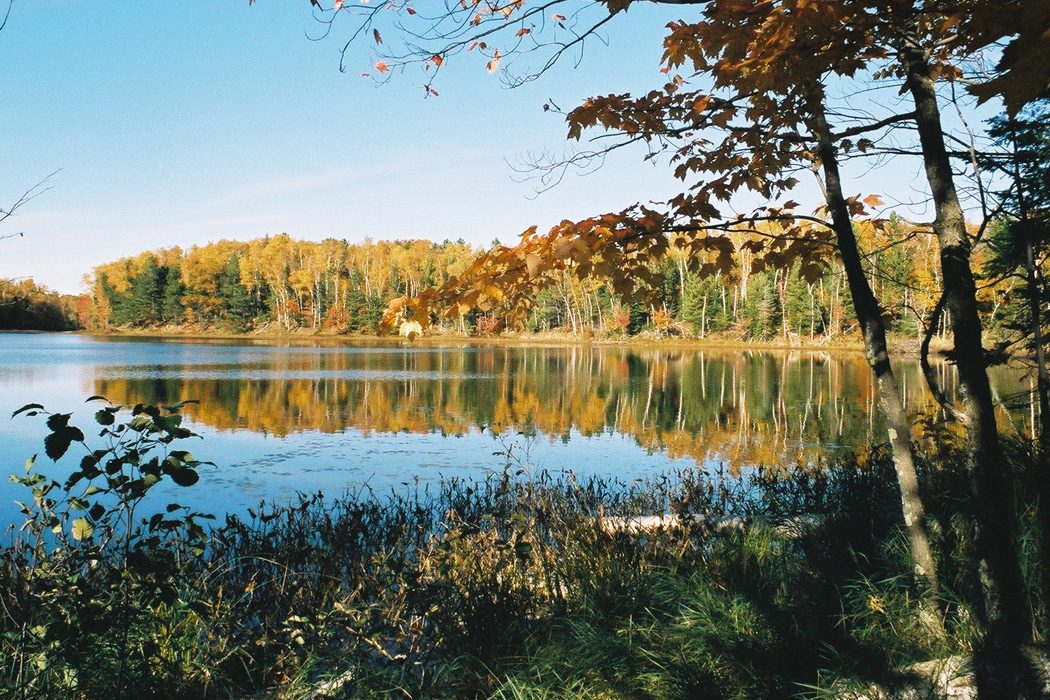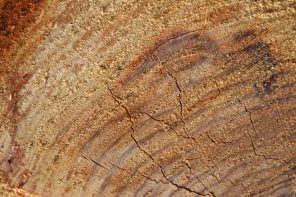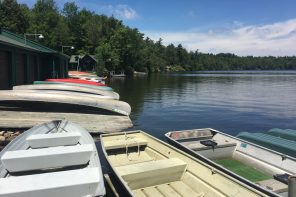When I first immigrated from England to southern Ontario, I felt as if I’d moved from a human-sized land to a land that needed me to wear seven-league boots. I needed boots that would leap over the wide spaces on the map where nothing happened. No ancient villages, each with a church, a pub, a village green, a post-office and a general store. No twisty country lanes winding like the threads of spider-webs up and down the landscape, giving the walker or cyclist or horse-rider or driver a dozen different options of ways to get from here to there. No pretty pub gardens where one could sit with a glass of cold beer and order a ploughman’s lunch. No footpaths, with their stiles and gates and tracings of the earth’s cultivated contours. And no one here even knew what a bridle-path was. There was just mile upon mile of wild, scrubby, rocky land. Why did it have to take four-plus hours to drive from Ottawa to Toronto? Couldn’t we just take a pair of scissors and cut a piece of that wildness out of the map? What was all that land for? As early Spanish explorers are reputed to have declared when arriving on the East coast, “Aca nada—nothing here.”
I sit in a Tim Horton’s between Kingston and Toronto, drinking almost-hot decaffeinated coffee from a paper cup. I watch the traffic careen by. The land is flat, the view nondescript. Possibly Lake Ontario would offer a beautiful vista, if it weren’t for a four-lane highway between me and the water. Plus the gas station and the truck stop and the Eezee Stay restrooms. I am grateful for the restrooms. I am grateful for the coffee, and yes, will roll up the rim for a prize of more of it. Remember this.
My first acquaintances in Ontario were politely dismissive when I asked if they thought there was such a thing as mental geography—a way of understanding the landscape determined by the geography of one’s childhood, perhaps, or of summer vacations. My childhood countryside was populated by high hedges, narrow winding country roads, uneven green fields with five-barred gates, flighty horses, doughty ponies, and the occasional donkey, phlegmatic dairy cattle, and the ubiquitous invitation of damp, grassy footpaths. In our summer vacations at or near the sea (usually the English Channel, which the French, we children learned with astonishment, wrongly called La Manche), the countryside would change to springy heath grass, drystone walls demarcating small irregular fields, steep coastal paths, prickly yellow gorse, tiny bright blue harebells, the high, faerie song of skylarks, and everywhere the white blobs of grazing sheep. In either case this was a human-sized countryside, its byways and passages and even its contours created by farmers over centuries past. It was a humanitarian countryside of stiles and streams and stopping-places, where strangers would commonly greet one another with a wave of the hand, and where it would not be unusual to meet up again later at a lunchtime pub. It was a countryside meant to be explored, meant to be walked, meant to be enjoyed.
I am six or seven. We are walking a coastal path right at the edge of the cliff along the South Downs in southern England; the wind is quite strong and I must be careful. Today I am collecting pink flowers for my scrapbook; yesterday it was yellow flowers; tomorrow, blue. So far today I have five different species of pink flower, I think, though possibly two of them are campions at different stages. I see a promising glint of pink to my right, and step off the track, around a tussock of wiry grass. At my feet a small flurry, and a little brown bird rises vertically up into the sky, singing and singing in its ascent till it’s so high I can no longer see it. Skylark. In appearance unimpressive, even dowdy, but its song, to distract wildly from its nest on the ground, is sheer enchantment. Even my childhood self recognizes this glory.
My first experiences of Ontarian countryside, by contrast, were stark reminders of my inadequacy and the inhospitable nature of both the environment and, unless you knew them already, the people who had put in the physical hard work to stake out their claims to it. Where were the footpaths? I seemed to spend many summer vacations slipping on the shale of the soft shoulder along the highway, or walking a long forested trail to be met by a ‘Private: No Entry’ sign at the other end. The lines were straight, the natives not particularly friendly. There were few birds, and their songs seemed raucous or tuneless. The land seemed dull, the houses flimsy. The lakefronts were owned by people who didn’t want to share them with casual hikers. Pubs were nonexistent, or a shabby, makeshift poor relation to the family-friendly places I’d grown up with. Even the famed cottage-country lakes seemed cold and muddy, requiring me to wade through weed to get to the open water. I missed the bracing salt of the ocean, the way the tide every day cleaned away the detritus of the day before, the high gulls and the soothing susurrus of the waves pulling at the shore.
It is high summer. We are staying in a rustic cabin on an island in Lake Nipissing. I am kneeling on a flat rock, washing dishes in the lake. Someone calls for me to come back to the cabin; I am anxious not to leave the dishes to float off into the water. My friend laughs at me: those dishes are not going anywhere, she reassures me; they’ll still be there when you get back. So wired I am to the ocean’s tidal imperiousness.
I think the change in my mental geography began with those lakes. Gradually I learned to appreciate their permissiveness. That birch-trees could stand calmly right at the water’s edge, and grasses could settle and flourish. That loons could build nests there which the following year they might find still intact, still livable, unless a rash of motor-boats and jet-skiers had veered thoughtlessly close. That the gold-dust in the water of one summer would be still gold-dust the following year, and the red lichen between the planks of the mooring dock would persist in its antediluvian presence, even if the dock itself were a little more crooked, a little nearer to the water, after the winter ice. I learned that a teaspoon dropped carelessly from a dock one summer would still be there the following summer, awaiting a diver with patience and clear goggles. I learned the eerie, haunting cry of the loon over the evening water, and the spate of falling stars each August. After a few years, when we took a trip to the south coast of England with the kids, they found the water bone-cold and sticky, the seaweed slimy, and the jellyfish unnerving; the shingle was painful on their feet and they longed to return to the smooth rocks and the clean, cool water of Ontario lakes.
It is Canada Day, and we are with a group of campers in Muskoka. Someone has put together a bunch of fireworks for a display from the diving platform. The air is damp; the fireworks take off fitfully. We feign enthusiasm for the kids’ sake. Suddenly, a wild flash to our left, and we all gasp as the whole night sky fills with green and white and lemon and blue sheets and scarves of dancing light. The Northern Lights, so immensely more dramatic than our paltry human display. We laugh. It’s a moment of cosmic irony.
The rocks of the Canadian Shield were my other teacher. They lay bared to the sun and the rain and the snow like the well-tuned limbs of a gigantic, benign overlord. They gave me their warmth and their assuredness. They allowed us to scramble around on them, but not to chart them with permanent footpaths; they expected our respect. Gradually I came to love the sense of being in touch with the hard, massive body of the land, which over the course of every year survived with impunity temperatures from -40 to +40 Celsius. In the same way I came to honour the plants and animals and peoples that over the millennia had adjusted to survival through such extremes of heat and cold. And slowly I came to realize that, in the very places where I had at first seen nothing, those living beings for whom these strange spaces were home composed a text of extraordinary complexity and diversity. An Anishinaabe or Algonkin person’s reading of that “empty” eastern Ontario landscape would be as intricate in detail as any ordnance-survey map in England. Here was another language barrier to overcome.
Look now, there’s our dilapidated old maple tree again, still budding, still twistily leaning over the cold rush of this northern river, despite all that the elements can throw at her. Every year she is there, a little wilder, a little more battered. I think of Al Purdy’s remorse about his initial dismissal of the stunted trees much further north at the Arctic Circle: “To take away the dignity / of any living thing … is to make life itself trivial.” Grand old dame: she is crooked and gnarled, but elegantly clothed in every season.
Sure, I still miss the places that first shaped me. When I go back to England now, there is a sense of knownness, a sense of physical comfort with the ground under my feet, that I suspect will never quite be replicated in Canada. But at the same time that English landscape feels small, it feels crowded, as if there’s no room to stretch out your arms. The hedgerows lean in towards the middle of the little country roads, the leaves meet and blend overhead, and the tunnels they create are something from a Lilliputian world. I tread the footpaths with care; when I’m driving I breathe in to make space for the oncoming car to pass next to me. I notice the litter in the village hedgerows and the damp walls inside the pub. People out with dogs habitually fail to pick up their dogs’ poop; people riding horses expect everyone to get out of their way, flattening themselves against the prickly hedges.
I am eleven. It is a Saturday morning in late spring, and I am on a solitary walking adventure. Honour demands that I never return home by the same route. I cross the field at the back of our house, meander around the copse, climb through the fence and over the five-barred gate; I skirt along the side of a field of cows, aiming to find an unaccustomed route to the old hamlet two miles away across the meadows. In the next field today there are several tall horses, skittish and wild-eyed; possibly their owners race these horses, or show them—at any rate, they are temperamentally very different from the stolid ponies some of my friends like to ride on Sunday afternoons. I breathe deeply and hasten past; now the only way out is over a barbed-wire fence. I climb it hurriedly, catch my leg in the descent, and tear a two-inch half-moon on my right calf. I stanch the blood and bind it up with an old handkerchief. I don’t go home the short way. The scar on my calf will be with me for the rest of my life.
And yes, Ontario has its share of goose poop along the shores of its lakes; the water at those cottages must be boiled or chlorinated for domestic use, because the lakes are shared with ducks and deer and beaver as well as motor-boats and jet-skis. But it’s clear to me that my mental geography has shifted. In our lakeside city my son and his family live in a little century-old house with a central gable, and the summer sun shines hot on their backyard full of tomato plants and squashes and raspberry canes. In a country town a 45-minute drive away, my daughter and her husband keep chickens at the end of their long thin leafy yard; every day there are three or four eggs, different colours from pale blue to speckled brown. She and her little boy can cross the road to walk by an old river and feed the ducks, and cycle through the covered bridge to get to the summer ice-cream parlour on the water. Each morning when I walk the Bruce Trail behind our house, I am blessed by the quiet trees and the ancient rocks. Walkers mostly nod good morning to one another as they pass. A cardinal swoops brilliantly past; a monarch flutters on the milkweed. This province has shaped me to its own contours now; I have come the long way home.
This essay appeared in an earlier version in Earthlines: The Culture of Nature 6 (August 2013): 47-9.




